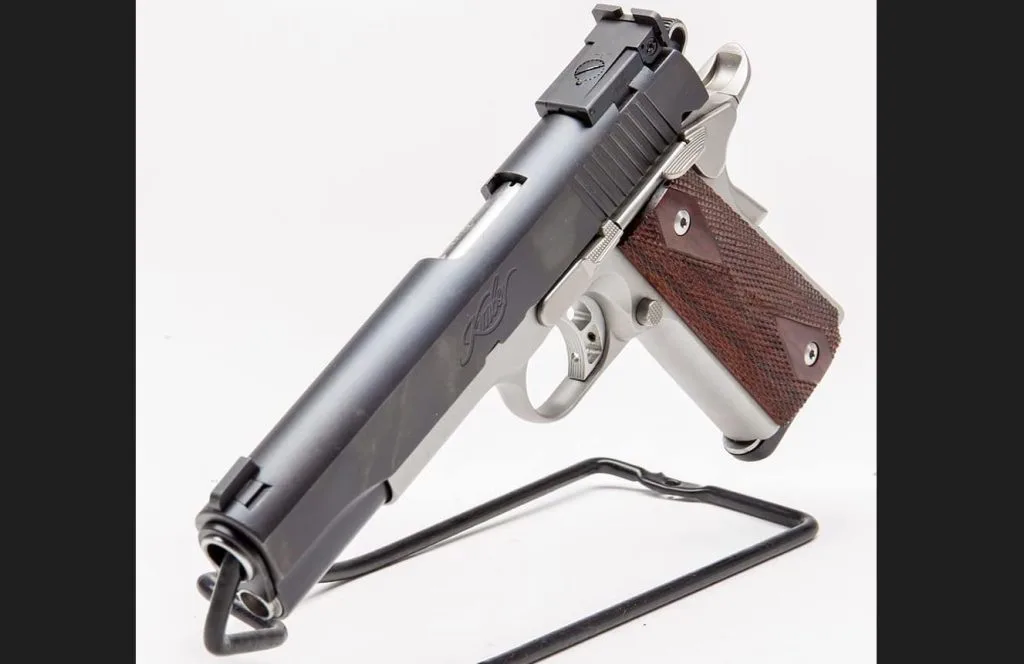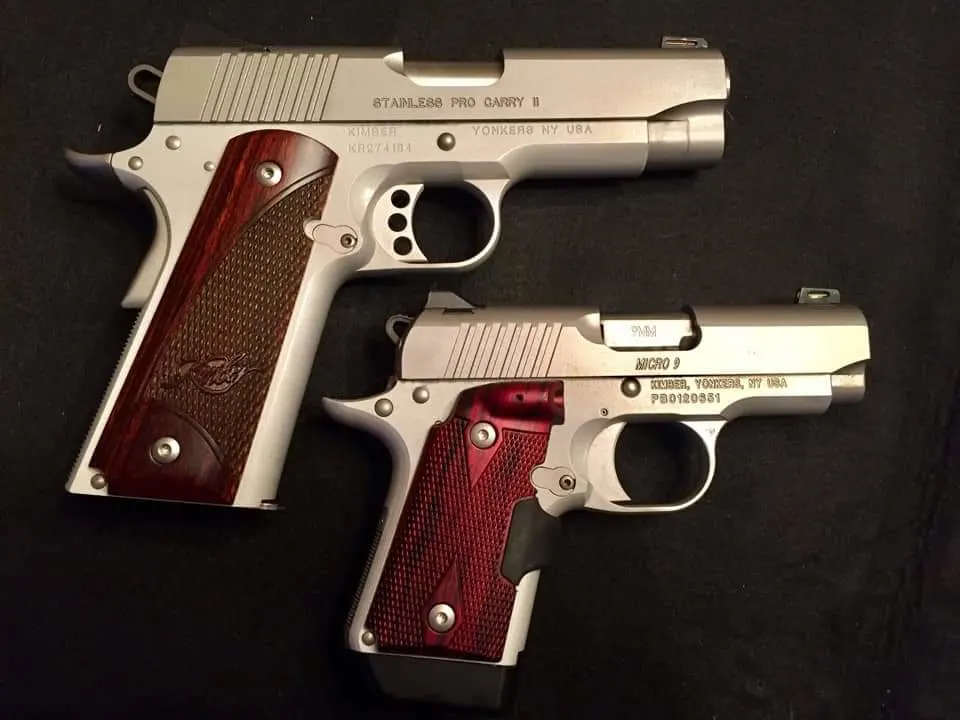Shooting a 1911 pistol is a lot of fun. Over 100 years old, this gun design stands among the easiest-to-use and the most reliable firearms on the market. As a result, it is one of the most popular pistols in the world. However, new shooters often notice the firearm tends to shoot low and to the left.
Generally, when your gun shoots to your low weak side, it is usually a sign of improper stance and grip. The problem usually arises as a subconscious overcompensation for poor weak side support on the gun. As a result, the gun moves towards that side: left for right-handed shooters and right for left-handed ones.
Fortunately, the problem is also a sign of inexperience, which means you can fix it with a little training. Therefore, by reading further, you will how your correct your aim and other potential causes for your low accuracy.

Shooting Low Causes and Other 1911 Accuracy Problems
While frustrating, shooting low and to your weak side is a common issue among 1911 pistol owners. Especially prominent among novice shooters, the problem can leave you frustrated and confused as nothing you do seems to correct the issue. However, the gun is usually not the cause.
Most accuracy problems come from inexperience, and this one is no exception. It does not matter how long you have been shooting. You can shoot guns all your life and still be a novice when you have a 1911 in your hands. While it is easy to use, the gun takes a lifetime to master. Simply shooting the gun will not make you perfect.
Shooting a pistol is also a perishable skill. You can lose it without regular practice. As such, even expert marksmen can relapse into their old bad habits if they are not careful.
Luckily, you can correct your aim and accuracy. While there is no “miracle cure”, the right training can improve your techniques The trick is knowing what you must improve.
As such, most 1911 training regimens require you to follow these steps:
- Understand your problem
- Make the necessary adjustments
- Practice shooting with those adjustments
- Repeat the process until you are satisfied
Fortunately, most accuracy issues fall under a few common categories. We present these categories below to help push you in the right direction.
Here’s a helpful video explaining what’s probably happening to you, with a lot more info below:
I use either Brownells, Palmetto State Armory, or Optics Planet to buy parts, that way I always know what I’m getting and that it will actually show up.
Human Error
Your mind can play tricks on you. That is because we are not robots, and therefore physically incapable of staying in one place (source). While adjusting your grip and stance will reduce the effect of this movement, you can never get rid of it. No matter how steady you think you are, your body will still move around slightly.
This movement can cause your gun sights to wobble. This wobble can in turn create false “sight pictures”. Under the confusion, you may become too impatient and shoot before your target settles down in your sight. As a result, your bullets fly low and to the right as your hands move the gun away from the target. Fortunately, you can properly compensate for your body movements if you are patient enough.
Remember, it takes time to fire a pistol. There is a short lag between the time you see the target, when your hand pulls the trigger, and when the bullet leaves the barrel. Any movement within that sequence will disrupt your aim. As such, you want to reduce as much of that motion as possible.
Stance and Grip
Improving your stance and grip can reduce that movement, but only if you do it properly. That is because holding your 1911 pistol improperly can make the issue worse.
Never Squeeze the handle
Most novice 1911 shooters tend to grip their guns tightly. They do this regardless of how many hands they use to control the pistol.
They then convulsively squeeze the trigger with their whole palm to shoot. As a result, the gun twists downward and towards its weak side. Shooting smaller targets amplify the effect, even when they use a sight.
You can correct this habit by switching to a three-finger grip. This grip places your fingers in a partial fist, giving you full control over the gun without jerking it.
With this grip, you should be able to move your trigger finger until it rests on the trigger. Shooting should then be simple and smooth. If you practice the grip using a racquetball as needed.

Maintain a Strong Grip
While you should never tightly squeeze the handle, you should never hold it lightly either. A loose gun is always unpredictable. Therefore, you want a tight enough grip to secure your firearm but still lets you move your trigger finger independently. Such a grip will minimize your natural wobble.
Dry shooting is a good way to practice proper gripping. During each practice session, observe how much your sight moves as your fire. You can then loosen or tighten your grip until the sight stops moving. Achieving that multiple times can help you learn what a good trigger pull feels like.
Fully Extend Both Arms While Shooting
The grip is rarely the only issue. Your stance goes a long way as well. Luckily, most people have a decent stance while firing their pistols. If they do have issues, it is likely with their weak side arm. This is especially true when they rapidly fire their guns.
Most people understand that they must fully extend their dominant arm while shooting to maintain control of the gun. However, they forget to do the same with the weak side.
While some guns require a bladed position, they will not work with a 1911 pistol. Your partially extending weak arm will just drag the gun in that direction. As a result, you start shooting down and to the left with each passing shot.
Instead, you must shoot your 1991 with your body squared off to the target with both arms fully engaged and extended (source: sharpshootersociety.com). This position gives you full control of the gun while improving your aim.
I use either Brownells, Palmetto State Armory, or Optics Planet to buy parts, that way I always know what I’m getting and that it will actually show up.
Conclusion
Constantly shooting low and to the left can frustrate any 1911 shooter, but the problem is usually just shooter inexperience. This is true if either you are new to shooting or just have a few rusty skills. As such, you can improve the accuracy of your gun with a little training and practice.
